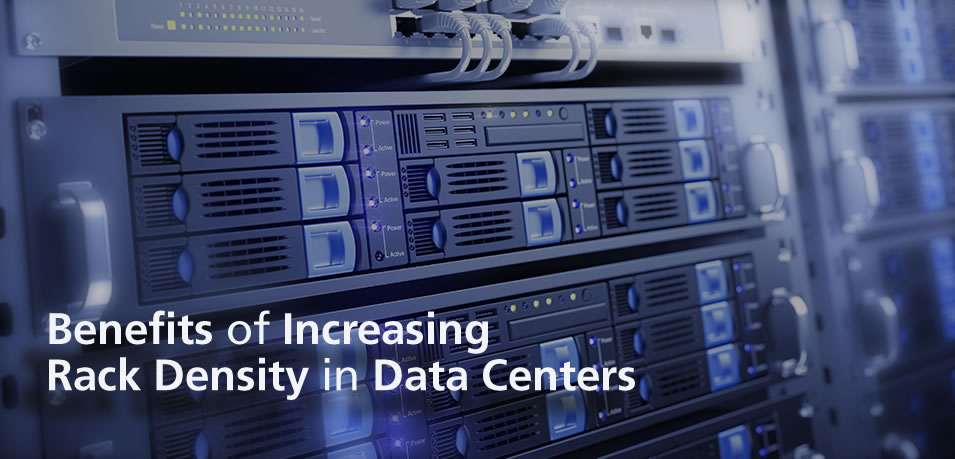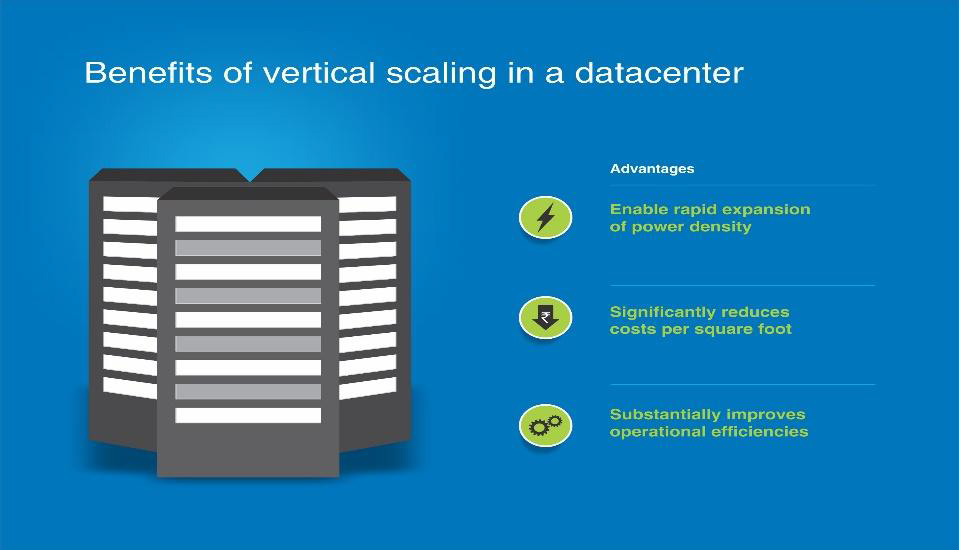The Raritan Blog
Home » Raritan Blog » How Can Data Centers Save Realty Costs by Increasing Rack Density?
How Can Data Centers Save Realty Costs by Increasing Rack Density?
Sanjay Motwani
October 21, 2015

Imagine a data center in New York or Shanghai or Bangalore for that matter, looking at expansion. With leases and rentals hitting the roof, what is the most economical way for them to expand? A horizontal growth will only incur additional expenses of cabling, cooling and not to mention gigantic real estate. Adding to the operating cost can only put pressure on the bottom-line. Data centers have a continuous need to look at ways to be cost effective in order to get a competitive edge in the crowded market space. With the realty rates reaching the sky, data centers are challenged to maximize benefits from existing space without impacting their expansion plans. If this sounds like a complex problem, the solution is simple – find ways that provide more computing power for less cost per square foot. Now, the question is how do we put this simple solution to work? The answer lies in vertical expansion powered by the right choice of power distribution units.
Vertical Expansion – a New Mantra for Data Center Efficiency
Vertically scaling up the data center will allow rapid expansion of power density by extending power distribution all the way to the individual rack and cabinets, without undertaking any major structural changes in the data center. Data center designers and managers are beginning to understand the importance of efficiency in building up and replacing the sprawl with higher density racks.
Most data centers with the legacy infrastructure cater to 4-5 KW per rack while the requirement has shot multiple times – beyond 20 KW per rack in many cases. With the high volume of big data streams becoming a norm, data centers need to be prepared to handle more density per rack and therefore must look at maximizing their capabilities. Keeping this in mind, data centers are already moving toward high-density computing environments with new and dense servers being deployed. The primary reasons cited for moving to higher densities include saving facility space and reducing energy costs.

Right PDUs in Addition to High Density Racks Go Hand in Hand
With changing market demands, data centers need to plan ahead and be ready for future challenges. Though high density racks are playing a pivotal role in increasing ROI of various organizations, power distribution units are equally important. It helps to be prepared and invest in PDUs that are designed with the future requirements in mind. The data centers of the future must have a longer lifecycle and as such need a lot of careful strategizing. One important part of the expansion plan is the choice of PDUs. Balance tilts in favor of PDUs that are capable of extending power distribution all the way to the individual rack and cabinets, without undertaking any major structural changes. Increasing power density by packing more resources per rack is an obvious choice, but then, care is to be taken to ensure this does not escalate operating cost by putting pressure on cooling efficiency or increase cabling cost manifold.
Three-Phase Rack PDUs – the Ideal Approach Towards Vertical Spacing
Three-phase systems enable the consolidation of power circuits with three-phase PDUs that have a much greater distribution capacity. Intelligent solutions like three-phase PDUs which run a single three-phase power cable to rack, reducing bulk cabling at the bottom. This approach not only frees the space but also increases airflow, bringing down the cost of cooling. Higher voltages at lower currents mean smaller cables, which use less copper, weigh less, take up less space, and cost less. By eliminating voltage transformations, 400V power reduces energy cost up to approx. 2% - 3% relative to 208V and approx. 4% - 5% relative to 120V.

Smart is in and data centers must have smart ways to monitor, report and operate. PDUs must also provide visibility to improve operational efficiency. Proper power usage monitoring, voltage levels, humidity, and other environmental factors are essential. It is also crucial to maintain pressure and airflow at the inlet and outlet level for the health of the data centers. Having a separate monitoring system for each device is cumbersome and impractical, not to mention cost intensive. PDUs that combine power distribution capabilities with smart monitoring and visualization is the best bet.
Customizability is an important aspect of any infrastructure that data centers invest in. PDUs that come with a strict integration framework becomes an impediment to easy adaptability. Most data centers look for PDUs that are not only compact but are customizable to their requirements including a number of outlets, phase balancing, staggered outlets, cord lengths, multiple inputs, remote power control, individual outlet metering, high-power for blade servers, and high-density applications, or even 400V power distribution. Three-phase PDUs with a capacity to serve 65KW per rack has also made an appearance in the market, providing data centers an unmatched opportunity to scale for huge data flow.
Conclusion
To sum up, undoubtedly data centers must reinvent themselves in view of the rising challenges. The demands are increasing and so is competition. Staying ahead of the herd requires a whole new perspective that looks at every inch of the available space with a critical eye and builds processes that not only sustain the operations today but are capable of scaling in the future. Utilizing each rack optimally and vertically expanding seems to be the path towards viable and sustained growth. Data centers that can increase rack density will definitely have higher cost efficiencies in this highly competitive market.
To learn more about high power density deployments, watch our webinar,"Overcoming the Challenges of High Power Density Deployments".
Other Blog Posts
- The Rapid Growth of AI and the Use of Raritan PDUs to Meet Higher Power Demands
- Posted on October 11, 2023
- Data Center Report Fewer Outages, But Downtime Still Costly
- Posted on September 20, 2023
- Survey: Energy Usage and Staffing Shortages Challenge Data Centers
- Posted on September 20, 2023
- Raritan Secure Switch: Secure NIAP 4.0 Compliant Desktop KVM
- Posted on September 20, 2023
- The Midwest is a Hot Market for Data Centers: How the New Generation of Intelligent Rack PDUs Can Save Cloud Giants Uptime and Money
- Posted on September 7, 2023
Subscribe
Upcoming Events
- Advancing Data Center Construction West 2024
- May 6 – 8 • Salt Lake City, UT
- Net Zero Data Center
- May 16 – 17 • Dallas, TX
- 7x24 Exchange Spring
- June 9th • JW Marriott Orlando Grande Lakes
Latest Raritan News
- Legrand Certifications and Process Controls Provide Confidence in Information Security for Network-Connected Devices in Data-Related Applications
- Posted on April 1, 2024
- Legrand Releases Version 4.0 of Raritan’s Industry-Leading Secure KVM Switches, Raising Bar for Secure Desktop Access
- Posted on July 31, 2023
- Legrand Revitalizes Data Center Sector with Two Revolutionary Intelligent Rack PDUs
- Posted on May 1, 2023
- Raritan Reveals The MasterConsole® Digital Dual KVM Switch
- Posted on February 18, 2021
- Legrand Data, Power and Control Division Announced as Finalist in Six Categories at DCS Awards 2020
- Posted on November 9, 2020